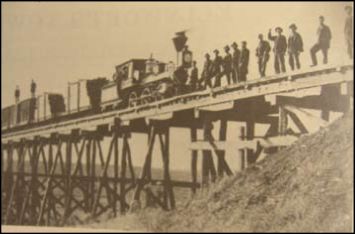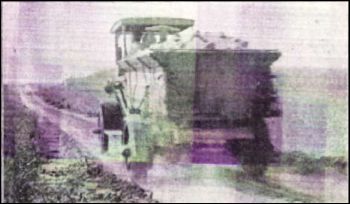This wasn't as conducive to privacy as most would desire as anyone could, and many did, pick up the receiver and listen or participate in the conversation. Once in a while there could be so many folks listening, that the original speakers could barely hear each other.
On the other hand, if an emergency occurred, and they did happen, one very long ring was a very effective signal to which everyone was supposed to respond. Laws were passed that sup- posedly kept someone, for example, from ringing the emergency signal to announce they had something for sale, etc.
The Rex Hughes family, who lived a mile east and 3/4 north of the School, had a telephone system that was quite rare. The farm was located at the northern limit of the Nevada Exchange and at the southern limit of the Roland Exchange so they had both services at their home. That had been the situation before the family moved there in the spring of 1938 and the companies were quick to tell Rex that should he miss payment on the bill, one of the services would be `pulled' and would not be reinstated.
At the time it was a `long-distance', a `toll-call', call from Roland to Nevada and so this arrangement saved the toll charge. However, there were two bills to be paid; so it was a little more expensive than one service with just a few toll calls to the other community. Surprisingly few folks called and wanted a message relayed to the other community, but, it was handy for `last minute' arrangements for things like 4-H meetings, etc.
My speculation was that a man by the name of Schugart, who was a railroad construction contractor, and who owned this property in the twenties, was the person who paid for the extra wires and had the two telephones installed.
Also, as both were `party lines', there was a combination of long and short rings to get a particular family and somehow it was arranged for both lines to have a long ring and a short ring as the `code' for Rex's farm.

One feature of the old wall phone that is unfor- gettable was what might happen during an electrical storm. If there were a lightening strike near the line, this lightening might enter the home and arc across the room. I've seen this bluish-white multi `legged' arc come out of the mouth piece and go across the room 15 or more feet and strike the wood burning stove- a good ground. It did not happen very often but one did not want to be anywhere near this `miniature' lightening strike. When one heard a lightening storm approaching, he put the mouthpiece in the full upright position and then if one had to cross to the other side of the room, he would get close to the wall where the phone was located and duck down so he wouldn't get in the line of arc that might come from the mouthpiece and hit him on its way to some ground in the home. Basically, you simply stayed out of the way.
By the way, Milford Twp was served by four telephone exchanges: Roland, Nevada, Ames, and Story City.

The Des Moines and Minnesota Railroad was constructed north from Ames in 1877.
The Iowa Central and North Western Railway, from Minerva Creek, northwest of Marshalltown, ran westward over 34 miles to Story City, thus through Roland, and was constructed in 1881 and 1882. The line from Roland to Story City was aban- doned in 1952 and the line east of Roland was abandoned in 1977 with the rest of the line torn up in May of 1981.
The Des Moines, Iowa Falls, and Northern RR was constructed through Fernald in about 1902.

This rarely seen photograph, taken in 1917, shows a load of brick being hauled to the construction site of the new Story County Care Facility which is (was) located in the north half of Sec 35 in Milford Twp. This photo appears to be taken looking west at the site of the current Evergreen Cemetery in Sec 36, just west of S14. (Just down the road east of where Ottos lived for years.)